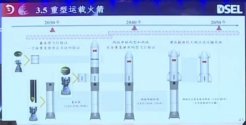antiterror13
Brigadier
You can have solid fuel rockets for ICBM work. Or keep a small number of hypergolic rockets in service if you don't want the skillset to die off. Having them take up half the number of annual chinese launches just means that you have an inefficient supply lines, ground support system and production lines have to support two very different kinds of rockets. And this is about talent too. Spacex famously poached a ton of it's employees from NASA. Lots of private chinese rocket companies are former CNSA/CALT employees. If they worked on hypergolics exclusively, then they will more or less be have to relearn a lot of shit when they join a private rocket company that is working on cryogenic rocket systems. Or there's some young super talented engineer that's assigned to produce dead end decades old hypergolic engines instead of working and improving on state of the art staged combustion engines.
You can literally make this argument for anything. Why don't we send soldiers to fight with sticks and stones? They're basically free. That's basically what all of American oldspace was saying too, they stuck with decades old rocket designs because "Cheap, easy and a hint of corruption", but at least they still worked with cryogenic engine systems instead of fucking hypergolic. And look at the state of ULA and NASA now. Completely outcompleted and driven out of the market.
You can easily make any amount of aurgments that Spacex could have stuck with the Falcon 1 for another decade, pushed for the smallsat market. Or that they could have sat on the Falcon 9/Falcon heavy for another decade and focused on Starlink and dominated the market. Instead they are always pushing the envelope and basically creating entire new markets. Even back in 2016 before the Falcon 9 landed, Elon was already talking about the ITS for landing on more than a 100 tons on Mars.
Isn't that the whole point of the virtuous cycle? Invest and push for modern rocket engines, more production lines means more economy of scale, which means cheaper rockets, which means more launches, which means more production lines, cheaper rockets and more and more talented minds working on improving them. I don't see that happening when half the launches are two decades old hypergolic rockets that are basically an dead end technology at this point. And it's not slowing down either, there's still going to be dozens of hypergolics launches until ??? 2030 maybe?
why you are so "hostile" to hypergolic rocket? thats only one factor from many and many. Is that the only one you know out of thin air ? It doesn't matter whether the cat is black or white as long as catches mice .... and China space programs definitely catch a lot of big mice
For your info, just in case you didn't know Chinese space program also use LOX/kerosene engine, so there is no lack of technology ..... just some other reasons why they decided to still use older hypergolic rocket which nothing wrong at all

